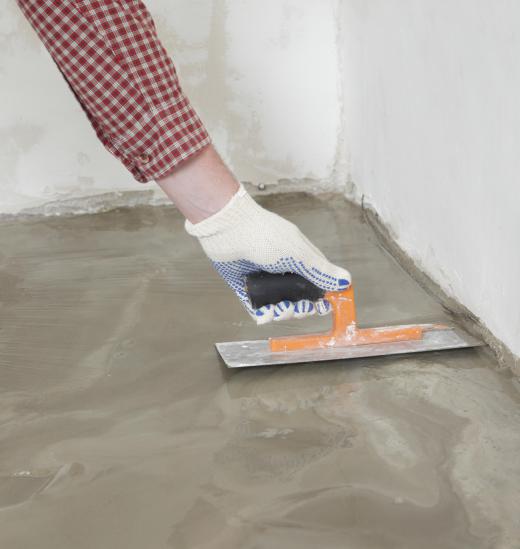Control joints are a type of engineering device used to limit damage caused by the natural shifts and movements of a building over time. These joints are used in masonry, concrete, and drywall structures to minimize aesthetic and structural damage due to cracking. Rather than allow these objects to crack or break at random, control joints are used to guide excess tension to planned locations. This controlled cracking can make it easier to repair damage by keeping it concentrated in a single area, rather than across the entire surface.
Concrete control joints are found in floor slabs, walls, foundations and sidewalks. As these structures dry, or cure, they experience significant shrinkage as water within the concrete evaporates. Over time, they continue to contract or expand due to changes in temperature, humidity and moisture levels. This constant swelling and contraction can cause ugly surface cracks as well as structural damage if left uncontrolled.

There are three basic techniques used to add control joints to concrete structures. Thin strips of plastic or high-density fiberboard can be used to divide sections of concrete as it is poured. These strips are placed every 4 feet (1.2 m) and are usually about 1/2 inch (12.7 mm) wide. Installers can also create a V-shaped groove at regular intervals to act as a weak point in the structure. Excess tension in the slab will be drawn towards this weak spot and cause cracking to occur along a straight line.
To create control joints in existing concrete, installers can cut joints along the surface at regular intervals. These gaps may be left unfilled, or filled with masonry caulk to improve the appearance of the joint. Control joints in concrete should be placed around the entire perimeter of a floor slab, at all intersections of two different concrete structures, and at regular intervals to break up large areas. Similar control joints are used with brick or block walls, as well as with other types of masonry structures.
Control joints are also used to control cracks in drywall partitions, which occur naturally over time as the building shifts or settles. They should be placed at least every 30 feet (9.1 m) along walls, and are used on ceilings to limit spans of drywall to no more than 50 feet (15.24 m). The sheets of drywall are butted together with a small gap in between. A metal control bead is placed within the gap and fastened to each sheet using nails or staples. The joint is then covered with drywall tape and Spackle® then sanded and painted normally.
